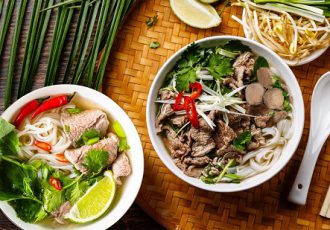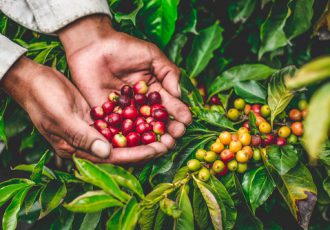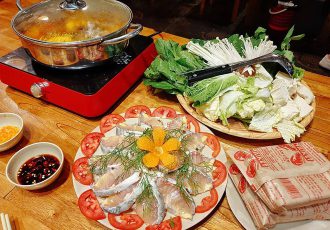Vietnamese cuisine is remarkably digestible and healthy. Ingredients with both Yin and Yang characteristics are carefully chosen to compose Vietnamese dishes.
In the Eastern tradition, Yin and Yang are not simply concepts of balance that may seem a little abstract. They are used to categorise elements that seem to be in opposition to each other, yet are complementary. In Vietnamese cuisine, for example, an ingredient falls into one of two categories.
- Yin represents what is cool, liquid, cold, wet, and interior, of feminine essence like water and winter.
- Yang is everything that is solid, warm, luminous, active, and external, and of masculine essence like earth and summer.
Summary
The presence of Yin and Yang elements in Vietnamese cuisine
The principle
Each ingredient has its own nature, either Yin (duck meat, fish, shellfish, courgette, cabbage, etc.) or Yang (ginger, chilli, pepper, dog meat), so the preparation of dishes must seek to balance and combine the ingredients. The inner harmony of the body is indeed threatened if one eats only dishes of a Yin or Yang nature.
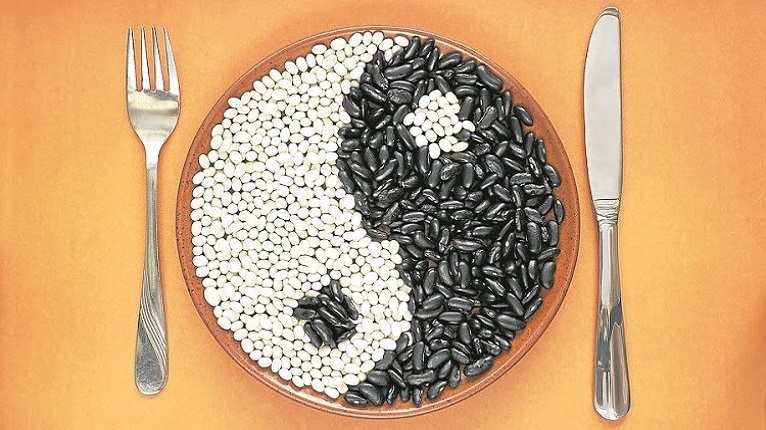
Spices use
Thus, Yang ginger is often present in dishes prepared with ingredients of a Yin nature. Yang chilli is also frequently used in dishes with a cold, temperate character such as seafood and steamed fish. Foods considered to be Yin include dark green leafy vegetables such as spinach, lotus root, radish, dandelion greens, cucumber, bamboo shoots, seaweed, watermelon, green, chamomile or mint tea, clams, crab and tofu.
A Vietnamese example that may dismay a Westerner is to taste a watermelon of Yin character with salt of Yang nature!
Nuoc mam
The mystery of the refinement of Vietnamese cuisine comes from the balance between the opposites. But it is not that simple! In addition to the balance of opposites (Yin and Yang), the five natural elements must be taken into account: Cold/Water (hàn), Hot/Fire (nhit), Wind/Wood (ôn hòa), Dryness/Metal (luong), Humidity/Earth (bình).
The associations in the kitchen are these:
- Water/Cold = Salty
- Hot/Fire = Bitter
- Wind/Wood = Acidic
- Dryness/Metal = Pungent
- Moisture/Earth = Sweet
Thus, the most typical condiment in Vietnamese cuisine is Nuoc-mam or fish brine. In the preparation of this national sauce, there are 5 flavours classified according to the 5 elements of Yin and Yang: salty, with fish juice (always sea fish), bitter, with lemon peel, acidic, with lemon juice (or vinegar), spicy, with powdered or crushed chillies and sweet, with powdered sugar. These five flavours combined and found in the national sauce of the Vietnamese correspond respectively to the 5 elements defined in the theory of Yin and Yang (Water, Fire, Wood, Metal and Earth).
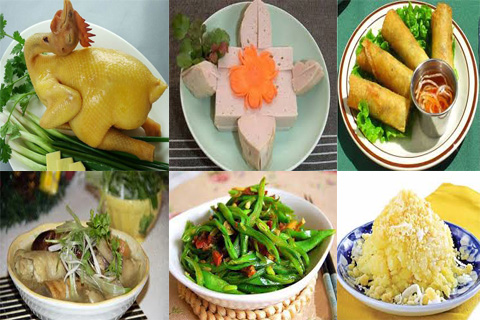
Food as a remedy
In order to have a good Yin-Yang harmony inside the body, the Vietnamese also use food as a remedy to prevent and regulate a possible imbalance in the body. All diseases are caused by an imbalance between Yin and Yang in the human body. A sick person with too much Yin needs to take foods that strengthen Yang, and on the contrary, a sickness caused by a rise in Yang needs Yin products to restore the lost balance.
For example, for colic with fever (heat = yang), one gives yin (cold) elements such as sweet black bean soup (black colour = yin), black bean cooking water, eggs, etc. In case of colic without fever (cold = yin), one gives yang (hot) elements such as ginger, galama… In case of fever due to cold (yin), rice soups with ginger and perilla leaves (yang) should be taken, in case of fever due to sunstroke (yang), rice soups with shallots (yin) should be taken. The list of Vietnamese foodstuffs that are also used as remedies is extremely rich.
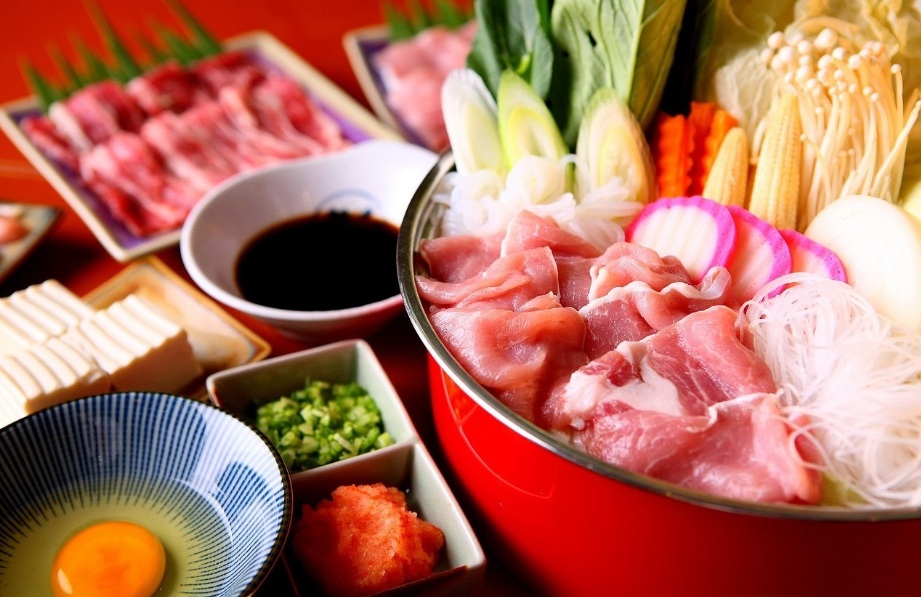
Balance and health
The right balance of Yin and Yang maintains life and ensures good health. To regain this balance, a person whose illness is of Yin character (Âm) must-eat dishes that tend to carry Yang character (Dương). On the other hand, a disease of Yang’s character must be fought by dishes of Yin’s character. For the Vietnamese, eating is healing. Constipation (a Yang character disease) can only be cured by Yin character dishes (liquid compote of black or green cowpeas, a kind of Vietnamese dessert). On the other hand, diarrhoea or stomach ache of a Yin character can be effectively combated with seasoned dishes (ginger, galanga).
The food of the Vietnamese according to the climatic regions and the seasons
In summer, when it is hot, Vietnamese people like to eat fruits, vegetables and fish products (fresh and cold, therefore yin) rather than meat and fat. In the preparation of food, people eat raw, boiled, in soups, salads, pickles, i.e. food with a lot of water (yin), acidity (yin), easy to eat, light, digestible and refreshing. It is also for this reason that the Vietnamese like to eat acidic and bitter foods: the acidity of pickled cabbage and aubergine, carambola, pancake, tamarind, lemon, atocarpus, garcinia leaf, the bitterness of bitter cucumber or herestis.
In winter, when it is cold, Vietnamese in the northern provinces make more fat and meat dishes, i.e. Yang foods that help the body to fight against the cold. In this season, the most common ways of cooking are frying, pan-frying, quick caramel (rim) or simmering (kho). The most common spices are also those of yang characters such as chilli, pepper, ginger, or garlic.
Warm countries (yang) are more conducive to the development of plants and fish products (yin), while cold countries are more conducive to the rearing of livestock with a higher production of fats and dairy products (yang).
Some emblematic Yin and Yang dishes
Here are two dishes representative of the principle of balance dear to the Vietnamese.
Spring roll
Despite the variety of versions, the spring roll consists of 5 main elements: protein, vegetables, herbs, rice vermicelli and rice cakes. However, this dish would not be complete without the sauce – the element that makes every spring roll a unique experience. The arrangement of these finely sliced elements inside the roll and its accompaniment follows the culinary principles of Yin and Yang.
Discover our recipe on video!
Bun Cha
With its grilled meat and fresh, tasty aromatics, Bun Cha is also an example of Yin Yang balance. There is nothing better than enjoying a “bun cha” in a small restaurant in summer, while the intriguing smell of grilled pork surrounds you.
You can try to make this dish, it is not so difficult if you follow our instructions!
Conclusion
Now that you have learned the secrets of Yin and Yang cuisine in Vietnam, all that remains is for you to come and taste these famous dishes on a trip!

